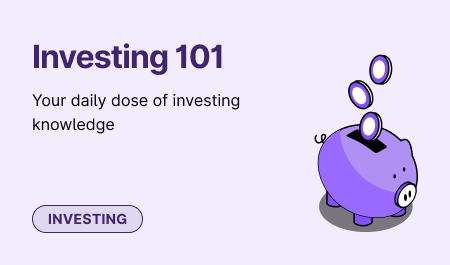Investing is personal to each individual as it depends on factors like goals and risk levels. The investment industry is constantly evolving and each investor has different needs. Whenever you wish to invest in mutual funds, managers usually ask about the time horizon of investing and risk tolerance levels to choose the right funds for you. Fund managers use several strategies to recommend the best investment options for you. Factor investing is one such strategy used by experts. Keep reading to learn everything about factor investing and its advantages.
What is Factor Investing?
A sudden rise in interest was observed in factor investing by individuals as well as institutions. Also known as smart-beta investment, this is a type of strategy that determines assets that are based on several factors. Firstly, experts identify the characteristics that they look for in a stock before investing in them. These factors are believed to contribute to the outperformance of stocks.
Not a new Concept
Factor investing is a concept that has been introduced previously. It only gained popularity recently because of the easy availability of data and technological advancement. Factor investing was inspired by the work of Eugene Fama and Kenneth French, who brought up a three-factor model in 1993. It's a model that adds small and undervalued companies' risks and returns to the traditional market risk factor when determining asset prices.
Fama and French realized that these factors explained most of the variations in stock returns. Other researchers came up with some additional factors that affect stock returns. Quality, volatility and momentum are other factors leading to variations in stocks. Nowadays, investors can look out for dozens of factors before creating a factor-based investment strategy.
Factors Involved in this Investment Strategy
While designing a factor-based investment strategy, there are now several things that can be taken into account. Let us have a look at some of them:
Value
Value stocks are those that are trading at a discount relative to their intrinsic value. These stocks tend to have lower price-to-earnings ratios and higher dividend yields than the broader market.
Size
The company's size is one of the most important considerations for investors. Investors usually go for small-cap stocks as they can provide exponential growth and much higher earnings than large-cap stocks.
Quality
Quality stocks have strong fundamentals, such as high profitability and low debt levels. These stocks tend to be less volatile than the broader market and can provide a hedge against economic downturns.
Momentum
Stocks that performed well consistently and are expected to perform greatly in the future are momentum stocks. Such stocks have strong earnings and positive price momentum as well.
Low Volatility
Low-volatility stocks are those that have historically exhibited lower levels of volatility than the broader market. These stocks tend to be less risky than the broader market but may also offer lower returns.
Macroeconomic Factors
There are mainly two types of factor investing: style factors and macroeconomic factors. All the factors mentioned above were style factors. On the other hand, macroeconomic factors explain the risks across various assets. Let's have a closer look at them:
Inflation
Inflation and stock prices are directly interlinked. It determines how much the consumers can spend in such a time. If the price of services around us constantly increases, consumers will spend less on stocks. Also, it negatively impacts businesses as people need to take risks in such conditions.
Economic Growth
Just like inflation, stocks and economic growth are directly professional as well. When the economy grows, consumers have a free hand to spend more, and companies can make more profit. If the economic growth is negative, companies cannot make the best out of the profits, and eventually, there is a decline in stock prices.
Credit
Depending on the level of default risk, different types of bonds provide varying compensation, and investors must select particular bonds that expose them to the desired amount of market risk.
Changes in Interest Rates
A rise in interest rates makes individuals hesitant to borrow money or even take loans. Overall, it makes economic activity slow and directly affects stock prices.
Benefits of Factor Investing
Factor investing is becoming popular for all the right reasons. Here are some of the benefits of this type of strategy:
Diversification
Investing in factors that display low correlation with each other can improve the portfolio diversification for the investors. These factors can be momentum, value or anything else.
Returns
Several studies show that factor investing has a higher chance of providing greater returns than the traditional market cap type of investing in the long term.
Portfolio Risk
Investors can majorly reduce the overall risk of the portfolio. This is because investors can focus on factors that exhibited lower volatility or downside risk historically.
Transparency
Factor investing provides a transparent and rules-based approach to investing, making it easier for investors to understand the underlying drivers of their returns.
Lower Cost
Factor investing strategies based on index funds or ETFs have much lower fees than actively managed funds. This leads to reduced overall costs for the investors.
Targeted Exposures
This type of investing also allows investors to target market exposures like value or momentum that may be expensive to achieve through traditional and active management.
At times, the only disadvantage of factor investing is that instead of minimizing risk, investors may actually be increasing their risk exposure. Using only one factor in the strategy will not be beneficial as one may put too much weight on those stocks.
Final Words
Just like any other investment option or strategy, factor investing too has its own set of risks. However, it still remains to be the most modern and scientifically proven method for managing portfolios. This is a great approach, especially for investors who like to invest in long-term stocks.



